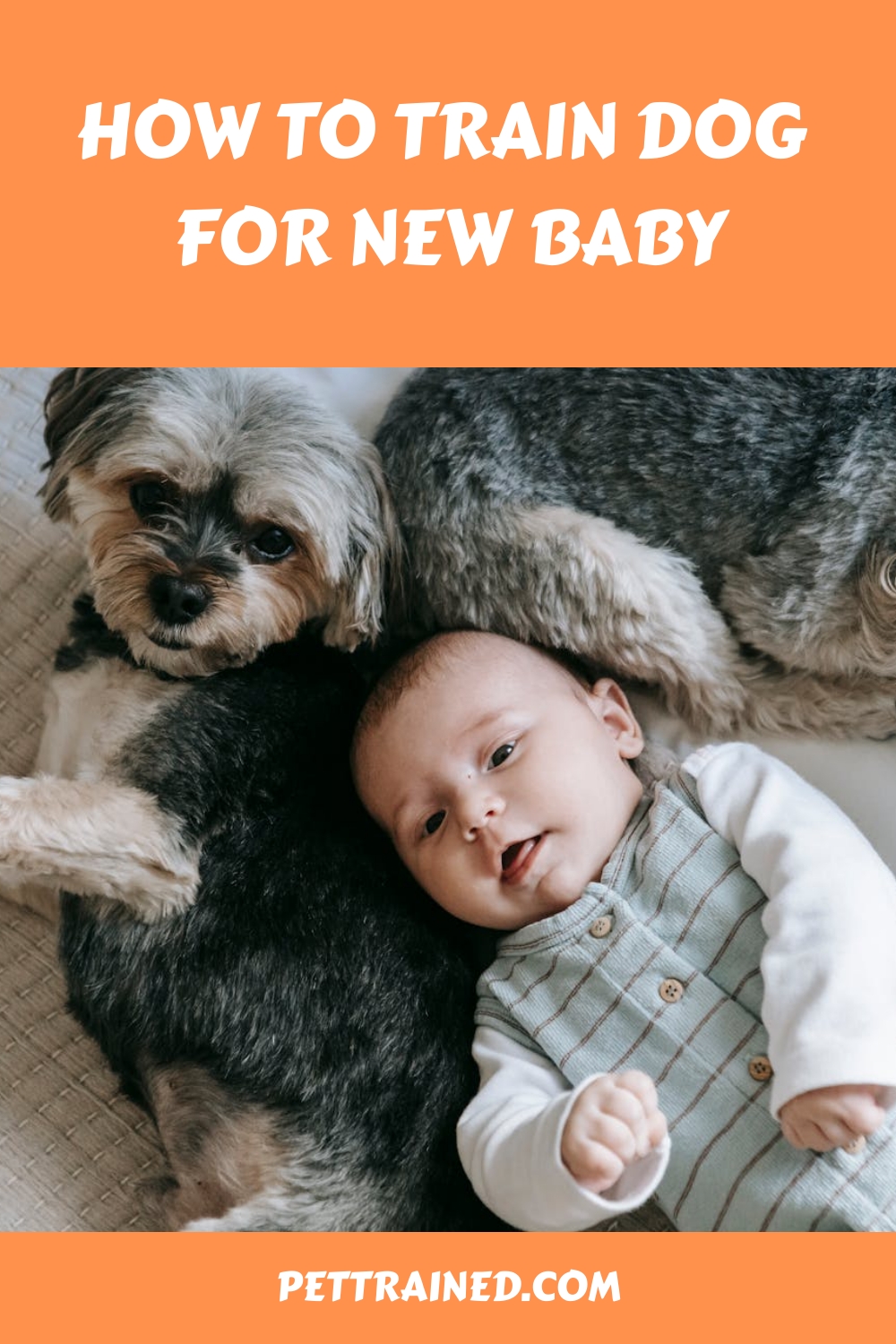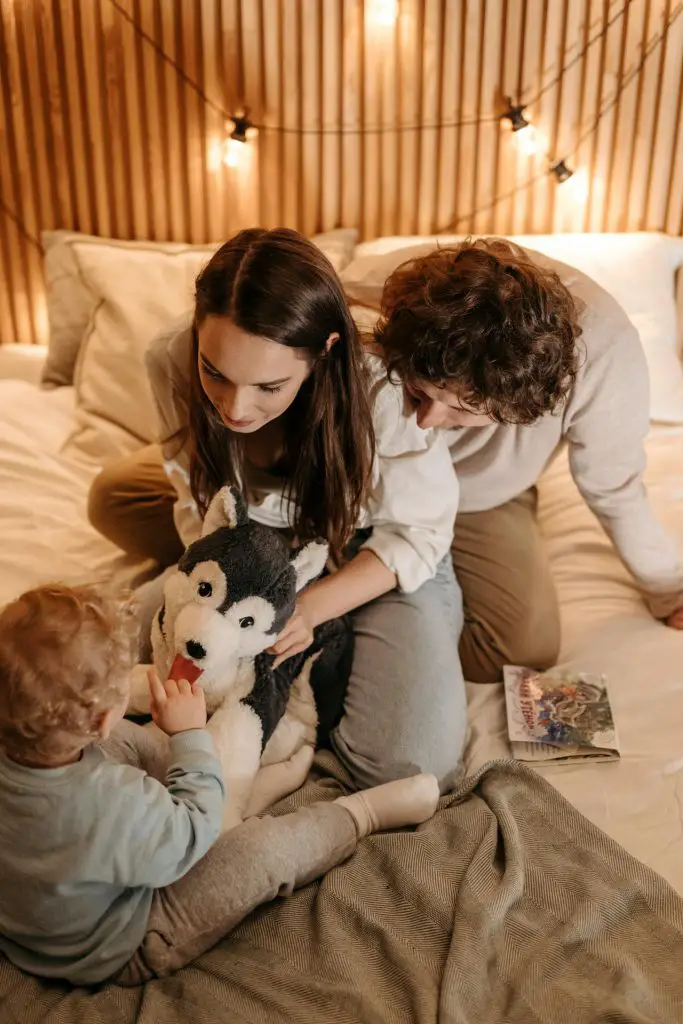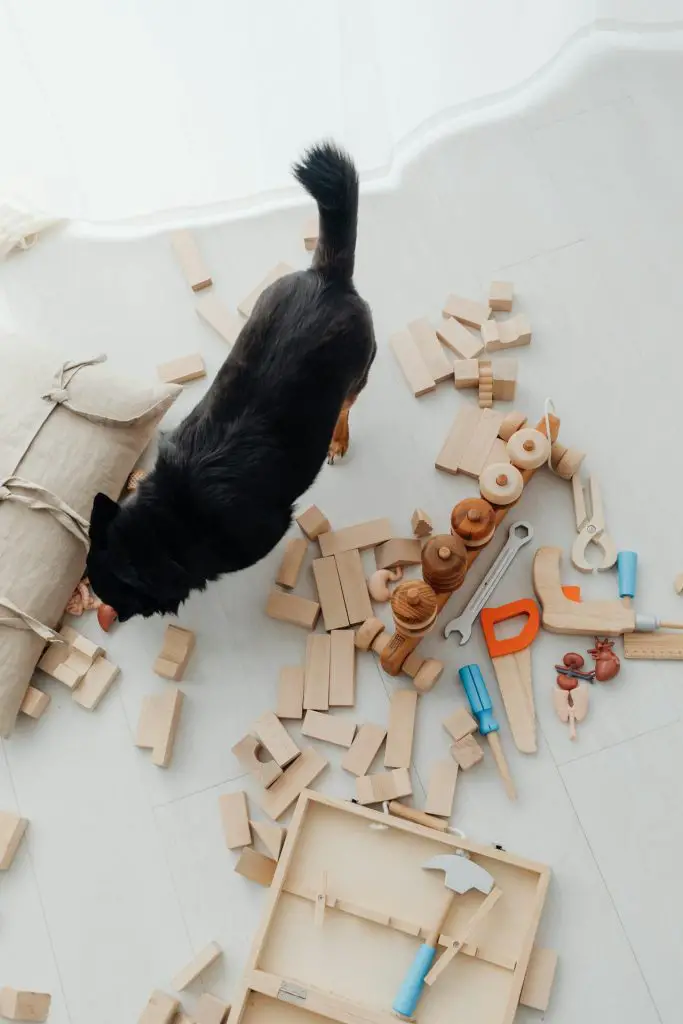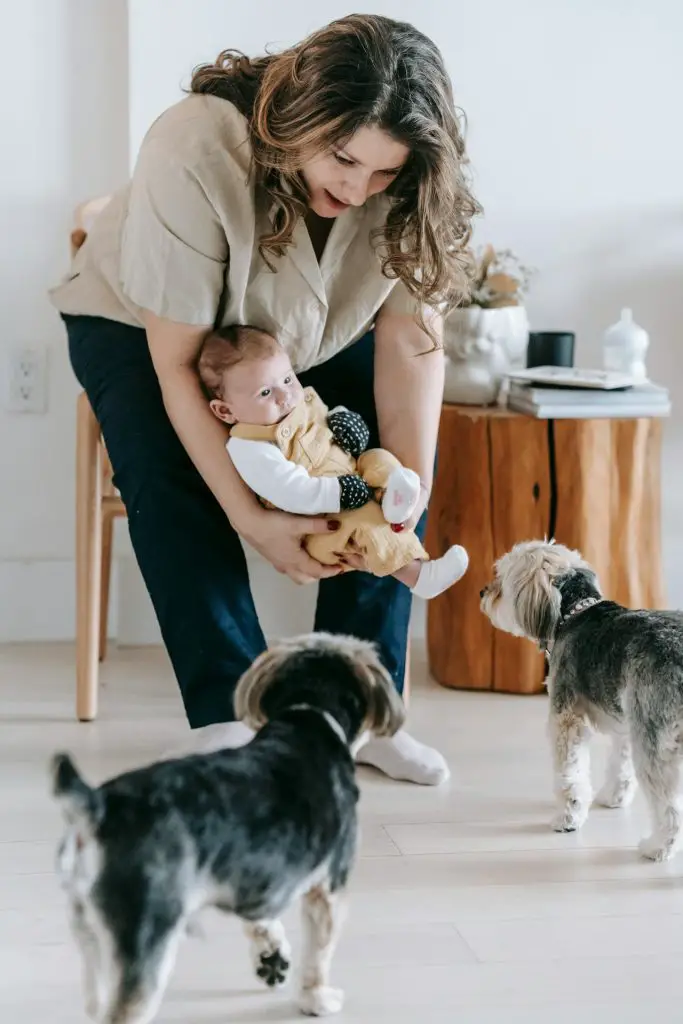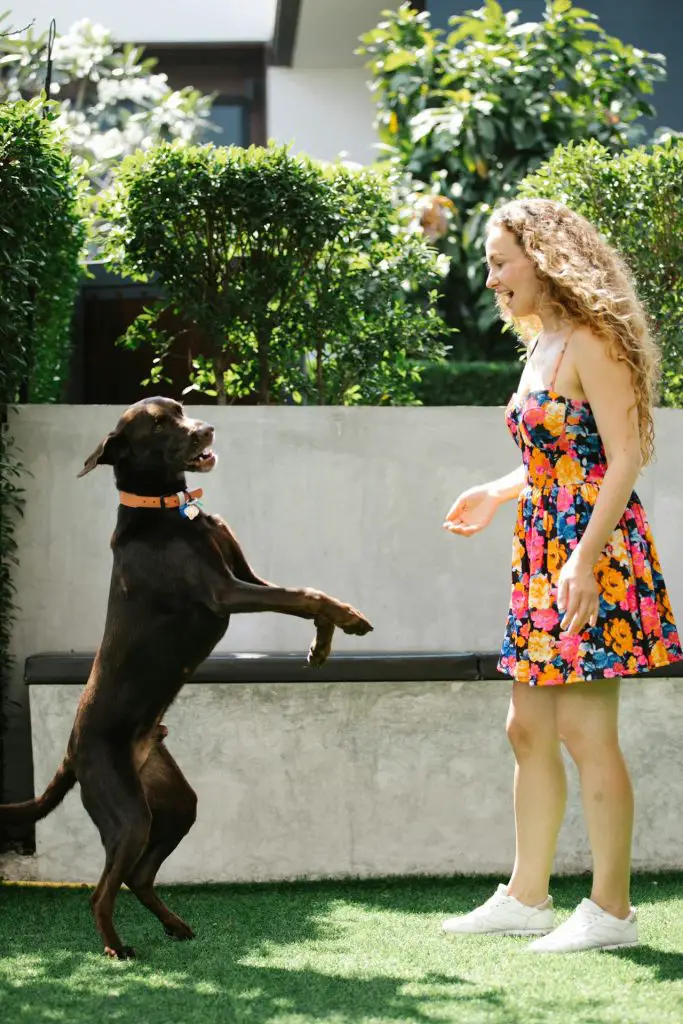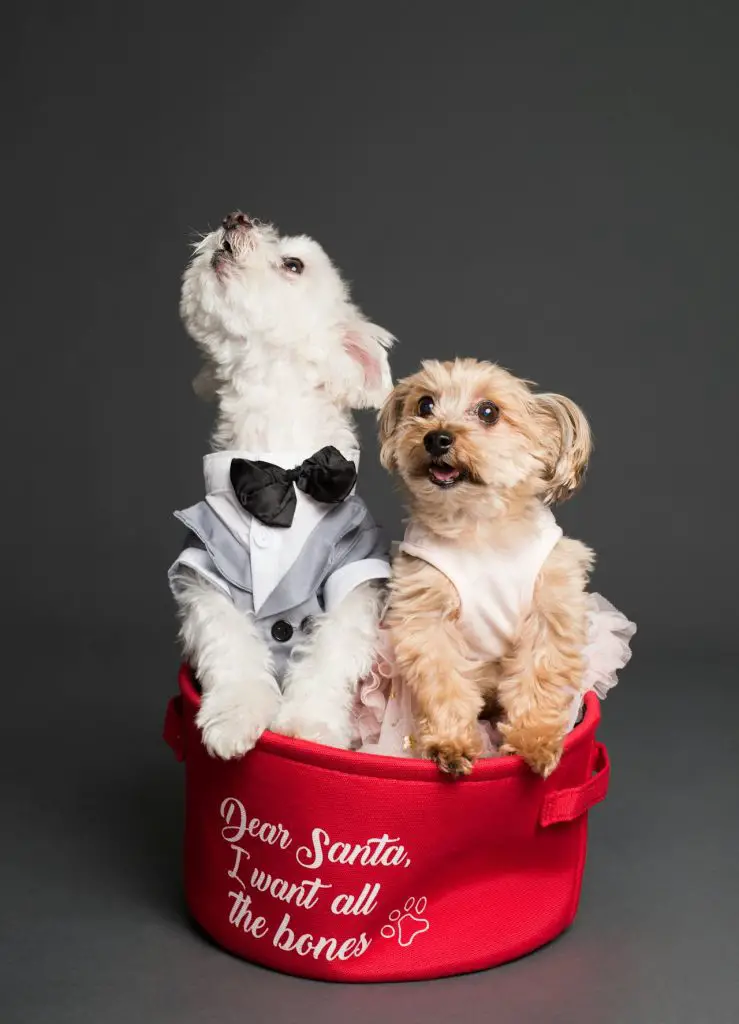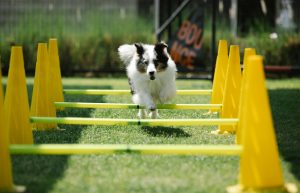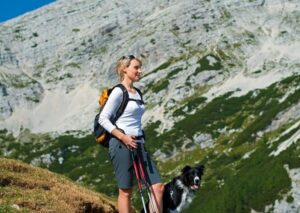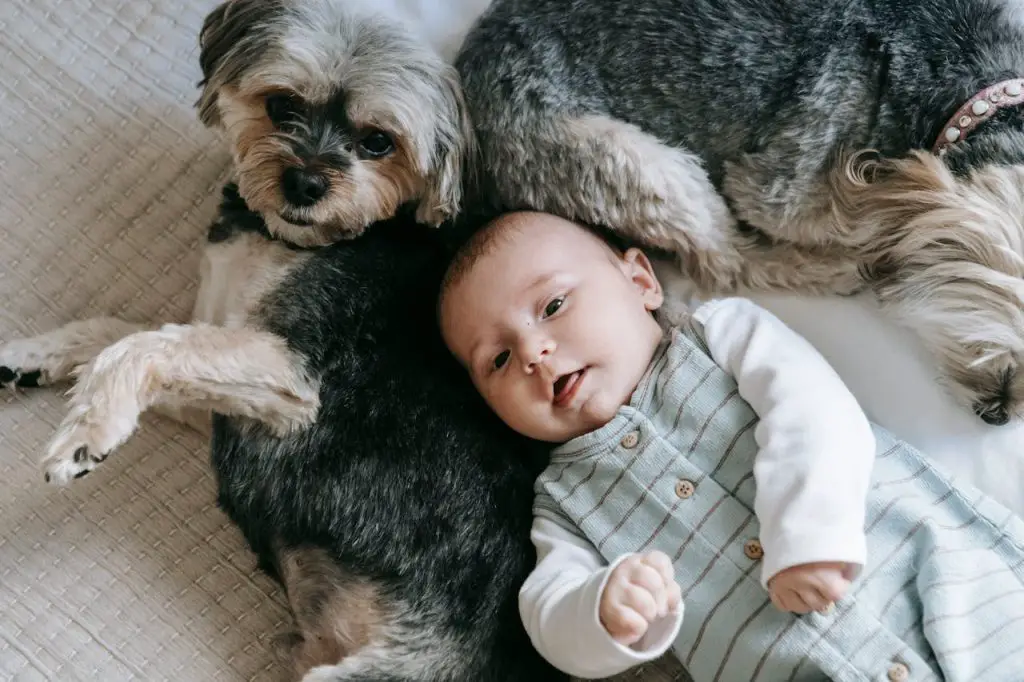
As you prepare for a new baby, it’s essential to start training your dog now to guarantee a smooth changeover. Begin by evaluating your dog’s temperament, observing their behavior around children, strangers, and new environments. Identify any signs of aggression, fear, or resource guarding, and develop a training plan to address these issues. Next, prepare your home by implementing baby-proofing strategies, designating dog-safe zones, and introducing new baby items. By taking these steps, you’ll be well on your way to creating a harmonious and safe home for both your dog and baby – and there’s more to explore. In this post we will look at How to train dog for new baby.
Table of Contents
Key Takeaways
- Assess your dog’s temperament and identify potential behavioral issues before the baby arrives to develop a training plan.
- Prepare a safe environment by baby-proofing your home and designating dog-safe zones for retreat and alone time.
- Introduce new baby items gradually, allowing your dog to explore and become familiar with them under supervision.
- Teach basic obedience commands, such as “sit” and “stay”, and practice noise desensitization to reduce anxiety and reactivity.
Assess Your Dog’s Temperament
Before bringing a new baby home, it’s vital that you assess your dog’s temperament to determine how they’ll react to the addition of a tiny, noisy, and demanding new family member.
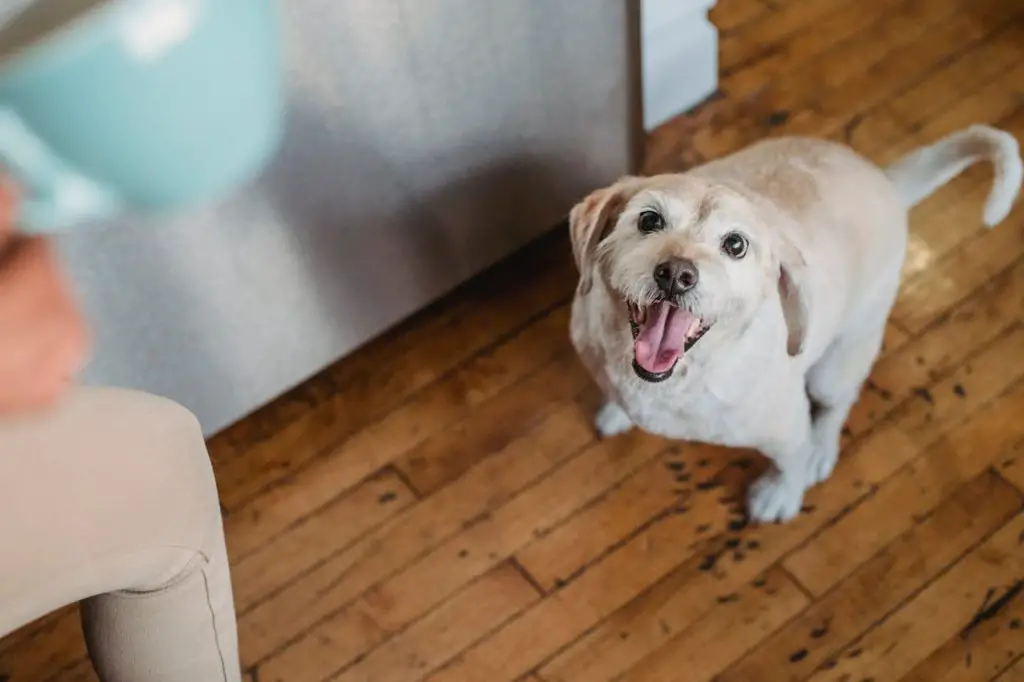
You need to evaluate your dog’s personality to identify potential red flags.
Conduct a dog personality assessment by observing your dog’s behavior around children, strangers, and new environments.
Look for behavioral signs such as aggression, fear, or resource guarding. If your dog exhibits these behaviors, it’s important to address them before the baby arrives.
This post contains affiliate links. However all the information provided on this site are my own honest opinions. See more in Disclaimer.
Observe your dog’s body language and reactions to loud noises and sudden movements, which can be similar to a baby’s cries and tantrums.
If your dog appears tense, growls, or hides, it may indicate that they need additional training or desensitization.
You should also assess your dog’s energy level and exercise needs to guarantee they’ll adapt to the changes in your household.
By understanding your dog’s temperament, you can develop a plan to help them adjust to the new addition and prevent potential conflicts.
This assessment will also help you identify areas where your dog needs more training or behavioral modification.
Prepare a Safe Environment
With a solid understanding of your dog’s temperament, you can now take steps to prepare a safe environment that meets the needs of both your dog and the new baby, ensuring a harmonious and hazard-free home.
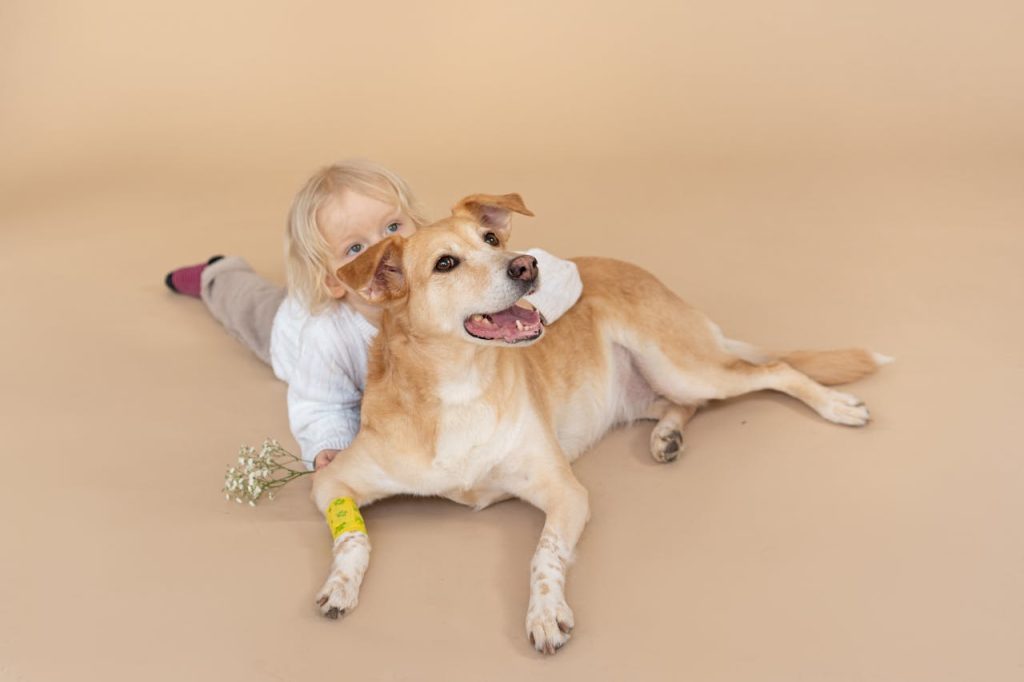
Implement baby-proofing strategies to secure any loose wires, toxic substances, and fragile items that could pose a risk to both your dog and the baby.
Additionally, designate dog-safe zones where your dog can retreat when feeling overwhelmed or needing some alone time.
Consider blocking off areas you don’t want your dog to access, such as the nursery, using baby gates or pet barriers.
This will help prevent any unwanted interactions between your dog and the baby.
Moreover, set up a quiet space for your dog to relax, eat, and sleep without being disturbed. This could be a crate or a separate room, depending on your dog’s needs and preferences.
Desensitize Your Dog to Noise
How can you help your dog adjust to the ear-piercing cries, coos, and other unfamiliar sounds that come with a new baby, and what role does noise desensitization play in a smooth shift for your household?
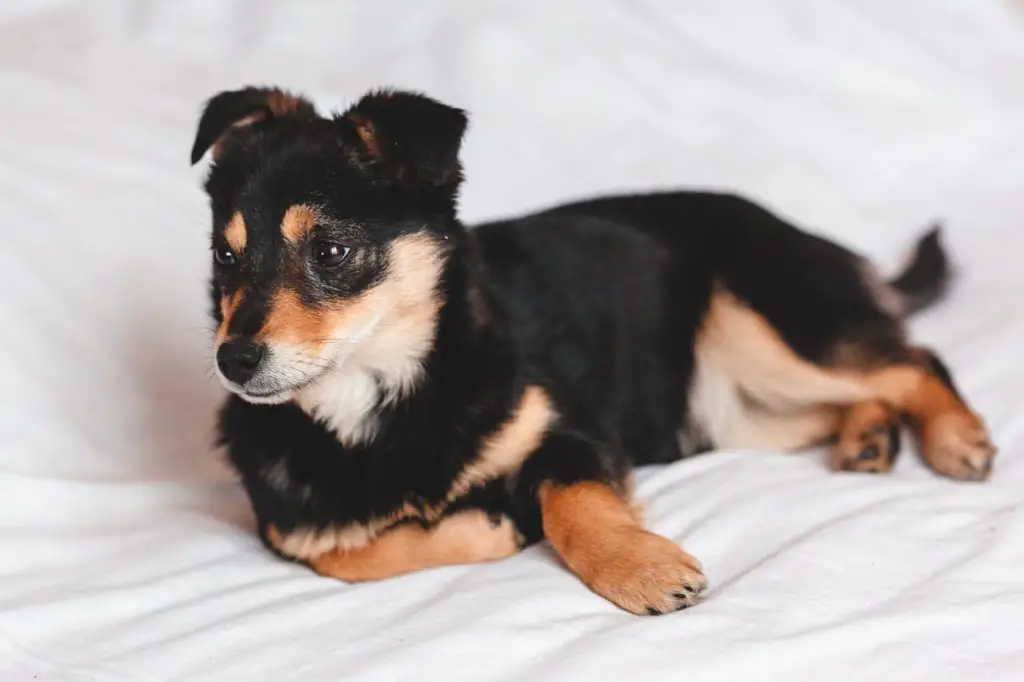
Desensitizing your dog to noise is an essential step in preparing them for the new addition. Dogs can be highly sensitive to noise, and sudden, loud sounds can cause them stress and anxiety.
To address this noise sensitivity, start by exposing your dog to various baby-related sounds, such as crying, cooing, and babbling.
You can play recordings of these sounds at a low volume, rewarding your dog for remaining calm.
As your dog becomes more accustomed to the sounds, gradually increase the volume to simulate real-life scenarios.
This controlled sound exposure will help your dog become more confident and composed in the presence of unfamiliar noises.
By desensitizing your dog to baby-related sounds, you’ll reduce the likelihood of them becoming overwhelmed or reactive when the new baby arrives.
A well-prepared dog is a happy dog, and noise desensitization is key to a harmonious household.
Introduce New Baby Items
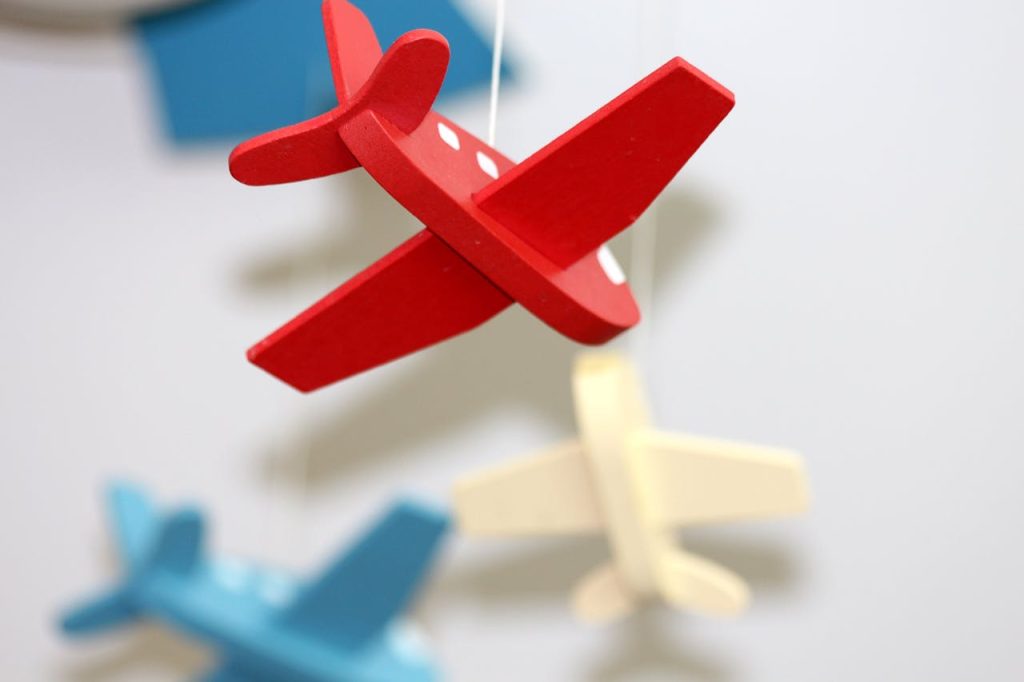
Now that you’ve desensitized your dog to new noises, it’s time to introduce the new baby items that’ll soon be arriving.
You’ll want to familiarize your dog with the equipment, such as strollers and high chairs, and help them get used to the new smells that come with a baby.
Familiarize Dog With Equipment
Before the baby arrives, introduce your dog to the new equipment and items associated with baby care, such as a crib, high chair, and baby carrier, to help your dog become comfortable with the unfamiliar sights and smells.
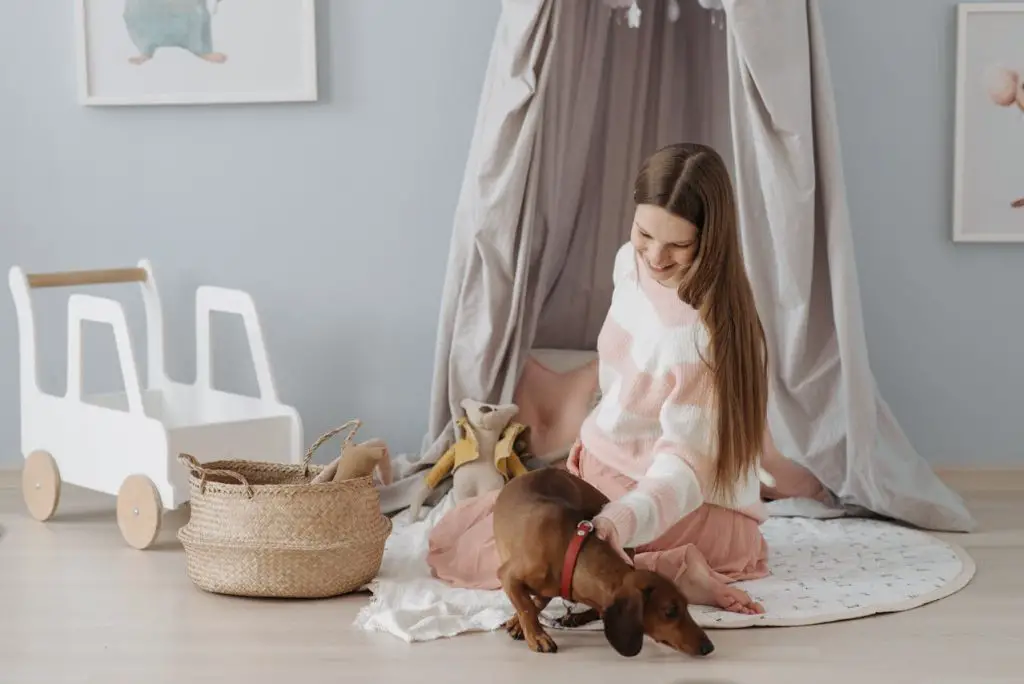
This equipment introduction is essential in preventing your dog from feeling anxious or territorial when the baby arrives.
Start by letting your dog explore the new items at their own pace, under your supervision. Reward calm behavior with treats and praise.
As you introduce each item, take necessary safety precautions to prevent accidents. For example, keep the crib and high chair at a safe distance from your dog to prevent them from getting too curious or trying to jump in.
Also, make certain the baby carrier is securely closed to prevent your dog from getting inside.
By introducing your dog to the new equipment gradually and in a controlled manner, you’ll help prevent stress and anxiety, facilitating a smoother changeover when the baby arrives.
Desensitize New Smells
As your dog becomes comfortable with the new equipment, it’s time to focus on the unfamiliar scents that come with a new baby, by introducing items like baby blankets, clothes, and toys to help your dog adjust to the novel smells.
This process is essential for scent recognition, allowing your dog to become familiar with the new aromas before the baby arrives.
Start by bringing home a few baby items and letting your dog explore them at their own pace.
Make it a positive experience by offering treats and praise when they show curiosity or calm behavior around the new items.
This exercise helps create positive associations with the new smells, reducing the likelihood of anxiety or stress when the baby arrives.
Be sure to rotate the items regularly to introduce new scents and keep the experience interesting for your dog.
By doing so, you’ll help your dog develop a confident and calm attitude towards the new smells, making the shift to life with a new baby much smoother.
Gradual Item Exposure
Your dog’s adjustment to the new baby will be greatly aided by the gradual introduction of various baby items, allowing them to become familiar with the sight, sound, and feel of these novel objects.
Think of it as a form of puppy socialization, where your dog learns to interact with new stimuli in a calm and confident manner.
Start by introducing one or two items at a time, such as a baby blanket or onesie, and reward your dog’s calm behavior with treats and praise.
As your dog becomes more comfortable with each item, you can gradually increase the number of objects and their proximity to your dog’s personal space.
Be sure to use positive reinforcement techniques, such as clicker training or reward-based obedience, to encourage good behavior.
This approach will help your dog associate the new baby items with positive outcomes, reducing the likelihood of anxiety or aggression.
Train Basic Obedience Commands
Training basic obedience commands is essential to establishing a strong bond with your dog and preparing it for life with a new baby.
By teaching your dog basic commands, such as ‘sit,’ ‘stay,’ ‘come,’ and ‘leave it,’ you’ll help it understand what’s expected of it and how to behave around the new addition.
Obedience training also helps to reduce anxiety and stress in dogs, which can be exacerbated by the arrival of a new baby.
To train basic obedience commands, start by using positive reinforcement techniques, such as treats and praise, to encourage good behavior.
Practice these commands in a variety of settings, including at home and in public, to help your dog generalize its learning.
Consistency is key, so make certain all family members are using the same commands and hand signals.
By investing time and effort into obedience training, you’ll be well-prepared for the arrival of your new baby and can help guarantee a smooth changeover for your dog.
Practice Interactions With Dolls
By building on the foundation of basic obedience commands, you can now start preparing your dog for the sights, sounds, and interactions it will experience with the new baby by practicing interactions with dolls.
This step is vital in helping your dog become comfortable and confident around the baby.
Start by introducing your dog to a doll, allowing it to sniff and explore the new object.
Gradually increase the interaction by incorporating doll playdates, where you simulate caring for the doll, such as feeding, changing, and cuddling.
As your dog becomes more comfortable, you can increase the realism of the doll playdates. Use positive reinforcement techniques, such as treats and praise, to reward your dog for calm behavior.
This will help your dog associate the baby with positive experiences.
Remember to supervise interactions closely, ensuring your dog doesn’t become too rough or excited.
By practicing interactions with dolls, you’ll help your dog develop essential skills for a harmonious coexistence with the new baby.
With patience, consistency, and positive reinforcement, you can set your dog up for success and create a peaceful household for all.
Manage Resource Guarding Behavior
As you prepare your dog for the new baby’s arrival, it’s essential to address resource guarding behavior to prevent potential conflicts.
You’ll need to identify which resources your dog tends to guard, such as food, toys, or attention, and develop a plan to manage this behavior.
Identify Guarded Resources
Your dog may fiercely defend food, toys, space, or even people they consider theirs, so identifying these guarded resources is essential to prevent resource guarding behavior around the new baby.

By recognizing what your dog considers valuable, you can take steps to manage resource allocation and prevent conflicts.
To identify guarded resources, observe your dog’s behavioral cues. Do they growl or snap when you approach their food bowl?
Do they become possessive of certain toys? Make a note of these behaviors and the resources that trigger them.
| Resource | Behavioral Cues | Management Strategies |
|---|---|---|
| Food | Growling, snapping | Feed in a quiet area, use a slow-feeder bowl |
| Toys | Possessiveness, resource guarding | Rotate toys, supervise playtime |
| Space | Territorial marking, aggression | Set boundaries, provide a safe space |
| People | Resource guarding, aggression | Supervise interactions, reward calm behavior |
| Attention | Whining, pawing | Ignore undesired behavior, reward calm attention |
Desensitize Resource Guarding
Once you’ve identified the resources your dog guards, it’s time to develop a plan to desensitize them to the triggers that cause resource guarding behavior, ensuring a smoother interaction with the new baby.

Start by making a list of the specific resource guarding triggers that set your dog off, such as approaching their food bowl or favorite toy.
Then, create a training plan that gradually exposes your dog to these triggers in a controlled and safe manner.
Begin by exposing your dog to the trigger at a low level, then reward them for remaining calm. Gradually increase the intensity of the trigger over time, always rewarding calm behavior.
For example, if your dog guards their food bowl, start by having someone approach the bowl while your dog is eating, then reward them for remaining calm.
As your dog becomes more comfortable, increase the proximity and duration of the approach.
By using these training management techniques, you can effectively desensitize your dog to resource guarding triggers, reducing the risk of aggression towards the new baby.
Consistency and patience are key, so stick to your plan and you’ll see progress over time.
Reward Sharing Behavior
Managing resource guarding behavior effectively requires teaching your dog to share willingly. This involves rewarding them for calmly relinquishing prized possessions, such as toys or treats, to others.
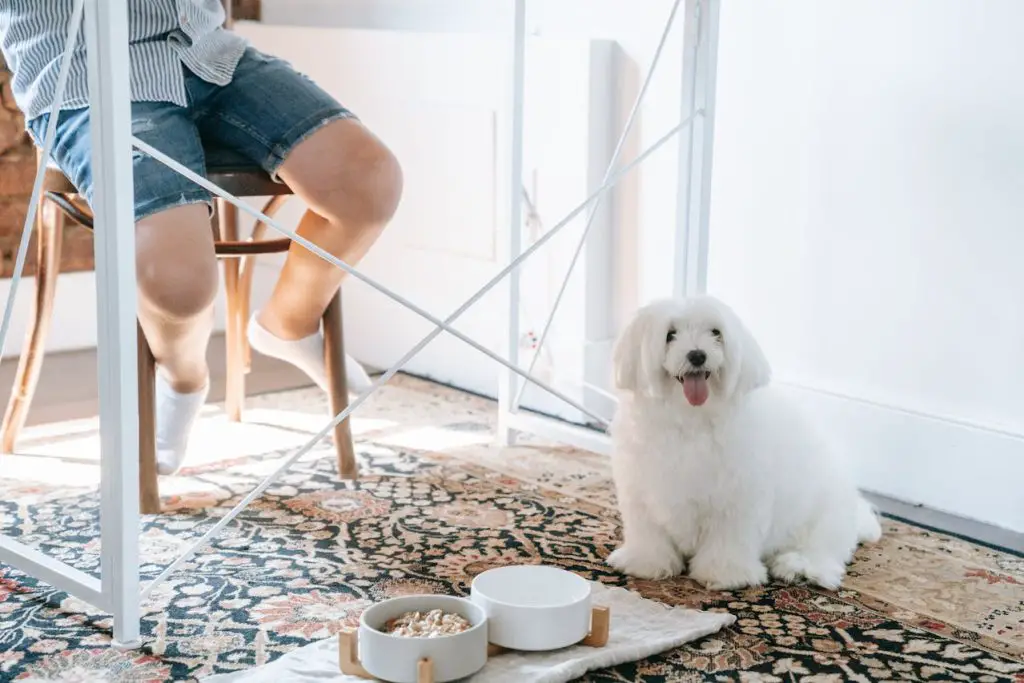
You’ll use reward motivation to encourage your dog to give up their resources without a fuss.
Start by having your dog hold a toy or treat, then offer a trade – a treat of higher value – in exchange for the item.
As soon as they relinquish the item, praise and reward them with the treat. This positive reinforcement will help your dog associate sharing with a positive outcome.
Repeat this process regularly, gradually increasing the value of the items being traded. You can also involve other family members in the exercise to help your dog generalize their sharing behavior.
By consistently rewarding your dog for sharing, you’ll help them understand that giving up their resources doesn’t mean losing out, but rather gaining something even better.
This will help reduce resource guarding behavior and create a more harmonious household when the new baby arrives.
With patience and consistency, your dog will learn to share willingly, making the adjustment to the new baby much smoother.
Frequently Asked Questions
You’ll likely spend 2-6 months training your dog for a new baby, depending on your dog’s behavior and previous training. As you progress, you’ll see improvements in your dog’s reactions to baby-related stimuli, ensuring a smoother changeover.
“Congratulations, you’re about to become a pro dog trainer overnight! You can train your dog for a new baby on your own, using positive reinforcement and gradual introduction techniques – with patience, consistency, and lots of treats, of course!”
If your dog has a history of aggression towards children, you’ll need to take extra canine behavior considerations and implement stringent safety precautions to protect the baby, which may include professional help from a certified animal behaviorist.
You’ll likely notice changes in your dog’s behavior, but with proper bonding techniques, you can minimize feelings of jealousy and left-outness; focus on maintaining a strong bond with your dog while introducing the new addition.
You can still train your dog during your third trimester of pregnancy. Although pregnancy challenges may impact your energy levels, you’ll notice changes in dog behavior that require attention; consistent training strengthens your bond.
Conclusion
As you welcome a new addition to your family, it’s crucial to prioritize harmony between your dog and baby.
By following these steps, you’ll be well on your way to creating a peaceful coexistence.
Remember, patience and persistence are key.
With time and effort, your dog will learn to gently share the spotlight, and your family will flourish as a result.
A little preparation now will yield a lifetime of love, laughter, and adventure together.
